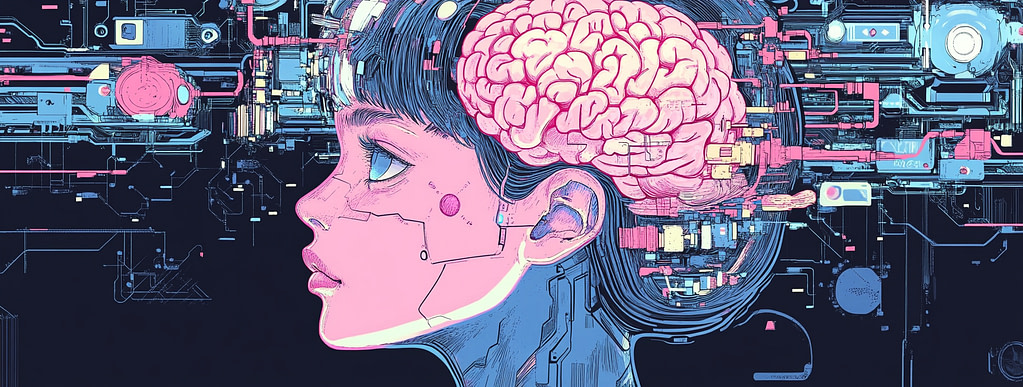These 8 Tips Will Help You Optimize RAG Systems Effectively

The complexity of RAG pipelines can be a turn off for creators. It takes time and actual human brain power to optimize RAG systems, nonetheless, it is possible to do so. So, you can optimize RAG pipelines following this simple methodology.

1. No Dirty Data
Data quality plays a pivotal role in optimizing RAG systems. High-quality data serves as the backbone of any successful AI system, and RAG is no exception. Data quality encompasses various dimensions, including accuracy, completeness, consistency, and timeliness.
High-quality data is the core of an effective RAG system. Prioritize refining your data quality to ensure accuracy and relevance will give you optimal results. There’s a lot you can do here to improve the quality of your data, here are some options to get started.
Data cleaning is the first step in improving data quality. This involves removing duplicates, correcting errors, and standardizing data formats. Regularly auditing your data for quality ensures consistent results and scalability. If you feed your pipeline clean data it might be able to hold more, understand better, and relate items more cohesively. On the contrary, if you feed dirty data to your pipeline it may have trouble understanding and might end up hallucinating a lot.
Accuracy is paramount. Inaccurate data can lead to flawed outcomes and hinder the system’s performance. Regular data audits and validation processes are essential to maintain data accuracy.
Completeness refers to the extent of data coverage within your system. By ensuring your data is complete you increase the success rate of your outcomes by a great deal. Comprehensive data sets include covering all relevant information, variables, dynamics and details. For this review your data. Bridge the gaps and leave no stones unturned. Gaps in data can limit the system’s effectiveness and lead to biased results.

Consistency involves ensuring that data is uniform and standardized. You will need to make sure all sources and formats give the same concepts and no contradictions. Inconsistencies in data formatting or labeling should be avoided at all costs. These can introduce noise and ambiguity for your pipeline. That will absolutely distort the outcomes you get. Establishing data governance practices can help maintain consistency.
Timeliness is another critical aspect of data quality. Speed and timing can be pivotal for RAG pipelines if the application has to be used in dynamic environments. Outdated data can compromise the relevance and reliability of AI outputs. Implement mechanisms for real-time data updates and monitoring to enhance the timeliness of your data.
2. Better Indexing, Greater Sanity

Efficient data indexing is key to the rapid retrieval of information. So as the second step in your optimization journey improve how your RAG system indexes data. Improvements here can show massive improvements in search performance.
In order to make this happen, experiment with different indexing techniques. Options include inverted indexing or forward indexing. Both offer unique advantages in terms of search speed and resource efficiency. Select the one that works best for your needs.
Another area to optimize within data indexing is the design of your index structures. Design referes to way data is organized and stored. Experiment with techniques like B-trees, hash tables, or tree structures. These can enhance the efficiency of data retrieval operations within your RAG system massively.

Developing a strategic approach to indexing can also improve performance. Consider factors like the frequency of updates and the size of your data. Designing your indexing strategy needs a lot of groundwork. Analyzing what you have and knowing what you are working with is a part of that groundwork.
3. Choose An Advanced AI Model, Nothing Archaic
The quality of the AI model will affect the quality of your outcomes. Advanced large learning models will boost your system’s abilities. It is supreme to choose well.
Better solutions come out every day. Don’t choose the flavor of the season, but choose the option that is the most relevant to your needs.
Explore different architectures and algorithms. A lot of options are designed specially to suit RAG requirements. Some are just not the right fit. We recommend models like transformer networks and deep neural networks. These will offer superior capabilities as compared to other solutions. If you want contextually relevant answers then a model designed specially for RAG will be a helpful move.
Customize your AI model to better fit your needs. Don’t be scared by this switch. It will yield better results and the effort will be worth it. This strategy might just make your pipeline an industry-leading software. Customization strategies include:
- Fine-tuning model parameters
- Adjusting the network architecture
- Incorporating domain-specific knowledge into the model
These efforts help your pipeline identify meaningful insights better. It will also mean less editing and greater trust for the users.
4. Enhance Query Processing
Optimizing how your RAG system processes queries is vital for user success. There are two parts to this, formulating the query and understanding it. Formulating the right is the user’s responsibility, sure, but you will have to help your users do this right. Understanding and executing the query is the pipeline’s responsibility, but again, it is you who must train the pipeline. Either way, it is the developer who must take care of smooth processing of the query module.

Enhance your system’s ability to understand and interpret queries. This will lead to more accurate and relevant search results. Techniques like natural language processing can be invaluable here. Semantic analysis, entity recognition, and query expansion can enhance query understanding capabilities many-fold. They can make your system more useful, flexible, and better at understanding what users ask of it.
Enhancing the system’s ability to interpret user queries, understand context, and extract relevant information is crucial for delivering precise search results. There’s no benefit in building a pipeline in all its sophistication only to find out it won’t be understanding your queries.
Efficient query execution is also essential. Look for ways to streamline the query process itself. You can look into optimizing search algorithms.
- You can optimize your search algorithms,
- Improve the infrastructure of your RAG system,
- Simplify query formulation and the user interface
These strategies can improve the speed and accuracy of your search functions. Parallel processing techniques or distributed query execution frameworks can enhance query functions further.

5. Focus on the Scalability of Your Project
As data grows, a non-scalable RAG system will cripple. Ensure your RAG system is scalable to safeguard your investment. Scalability affects not just performance, but also the long-term viability of your system.
Designing your RAG system with scalability in mind from the get-go can save a lot of headache in the future. The following design methodologies in tandem with effective storage solutions can help here:
- A microservices architecture
- Containerization solutions
- And data compression techniques

6. Don’t Stop Keep Going
Continuous monitoring and feedback are essential for the ongoing optimization of RAG systems. They allow you to identify issues and opportunities for improvement in real time.
Implementing monitoring tools can help you track your system’s performance holistically and almost automatically. These tools are invaluable for identifying bottlenecks and areas where optimization is needed.
User feedback will help you optimize your RAG system. Engage with your users. Understand their needs, hopes, and frustrations.
Incorporating user feedback is important to drive system improvements. Likewise, it can also enhance user engagement and help with optimization. That knowledge becomes a guide to optimize efforts in meaningful ways.

7. Keep it Secure and Private
Ensuring that your RAG system adheres to best practices in data protection will safeguard your data and also build trust with your users.
Adopting strong security measures can protect your data from breaches. Keep your pipeline secure by design and choice, not just to comply. Try encryption techniques, set up access controls, and ensure only authorized users access the data.

8. Innovation Wins
Your team has to be driven by the desire for continuous improvements in your system. Encouraging experimentation and learning can lead to breakthroughs. If you want long-term growth, consistent user satisfaction, and incremental performance then this approach is vital.

Your mission should be to improve and optimize your RAG pipeline consistently and continuously. This is not a one-time job. If you are willing to invest that kind of time and energy in it then the rewards will be massive. However, if you let small issues slide, the small inefficiencies will cement into huge problems ultimately. Focus on delivering the finest RAG pipeline. Don’t hyper-fixate on perfection though. Get there slowly and steadily. Remember this is not a sprint, it is a marathon.